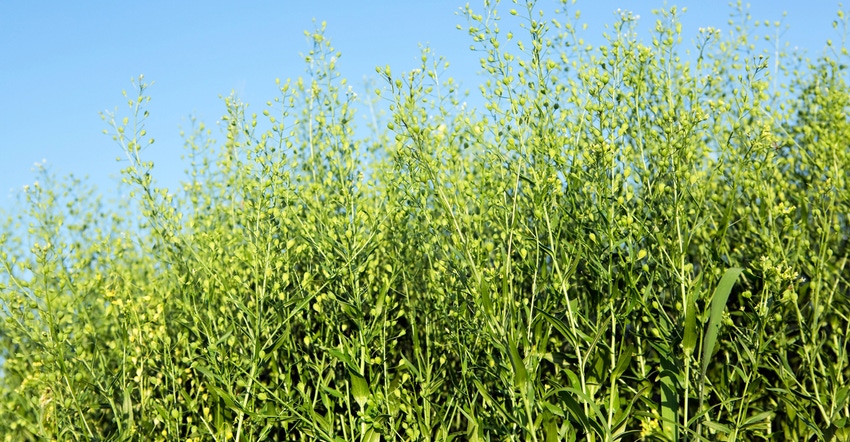March 31, 2021

Oliver Peoples is excited about Camelina. More specifically, a form of Camelina sativa that his company, Yield10 Bioscience, has engineered to produce an interesting new product in the seed — PHA polymer.
"There's a deeply held conviction that if you could produce PHA bioplastic directly in the seed at reasonable levels, you should be able to approach the economics of soybean oil or canola oil production," he explains.
Sounds esoteric, but PHA bioplastic has a wide range of uses, and being natural, it is biodegradable. It can functionally replace plastics made from petroleum, and if produced in the seed of the crop — like Camelina — it can be produced at a low cost and on a very large scale, reducing the cost of production of finished products. Traditionally, PHA bioplastic has to be produced using fermentation, which is an expensive process, Peoples says.
"This is a game changer for two reasons," he says. "Your cost structure has some advantages to what petroleum plastics offer, and you've got renewability and biodegradability. And your capital costs of scaling is dramatically less than fermentation."
But the kicker is that Camelina sativa is often a rotation crop in the Pacific Northwest and Canada. "But it is also really a relay or cover crop," Peoples adds. "We need to double food production by 2050, but we also have to reduce greenhouse gases."
As more farmers look at cover crop alternatives, the pushback is that planting those covers is an upfront cost, and measuring payback is a challenge. A crop like the PHA bioplastic Camelina from Yield10 would offer the potential of a new income stream even as the plant worked as a soil-building cover crop.
A bioplastic opportunity
Peoples explains that PHA bioplastic has a wide range of use. The current crop of Camelina sativa being tested in 2021 — the company selected two promising strains — contains about 6% PHA content. The company continues to refine its process and sees a future where up to 20% content is possible.
There's growing demand for a biodegradable plastic, given rising concerns about pollution from plastics. The Camelina oil can be used as biodiesel, helping that market to expand, and the protein meal can go into feed. And the biomass of this flourishing crop can build soil organic matter.
The bioplastic itself has an added use in water treatment where the polymer can help convert nitrate forms of nitrogen into nitrogen gas, cleaning up water.
"If you drop those PHA pellets into nitrate containing water, natural microbes in the water will convert the nitrate form to nitrogen gas," Peoples says. "This is a tremendous opportunity to address nitrate pollution in water in a cost-effective way."
In announcing the advancement of PHA bioplastic production in Camelina, Kristi Snell, vice president of research and chief science officer at Yield10, explains that researchers are implementing several improvements to advance PHA-producing Camelina lines.
"Insights from our field tests as well as our expertise for increasing carbon flow in Camelina from our GRAIN platform are expected to enable us to make further improvements to increase yields of PHA per acre," she says.
Moving forward, Yield10 is executing a commercialization strategy for Camelina focusing on producing oil for biodiesel, and a fish oil supplement for aquaculture feed.
Peoples adds that the company recently obtained rights to a Camelina Omega-3 drop in replacement for fish oil under recent agreements with Rothamsted Research.
For farmers, the prospect of an income-producing cover crop could be a win-win. The market is just gearing up. Learn more at Yield10bio.com.
About the Author(s)
You May Also Like






